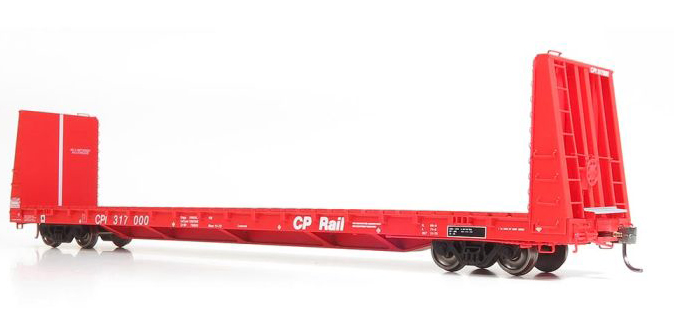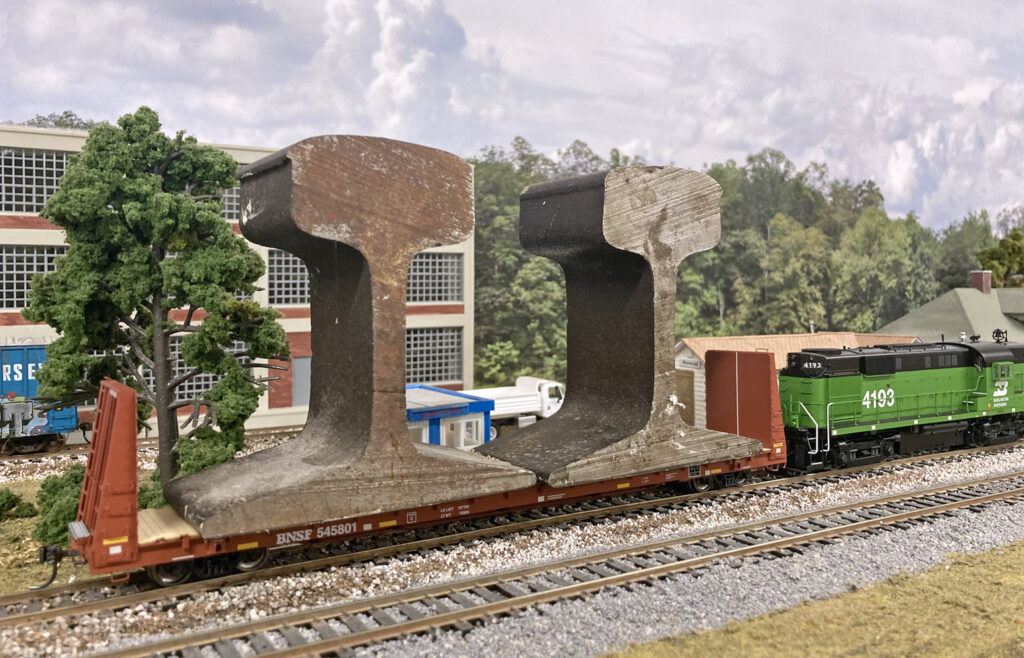All about the community of model railroading and rail enthusiasm
Canadian HO-scale modelers can finally have their way with Rapido Trains’ Canadian 66-foot Marine Industries Bulkhead Flatcar, the first non-U.S. bulkhead replica ever produced, according to the company.
Until lately, modelers north of the border have “had to put up with American prototype cars painted to represent these classic cars, but no more,” Rapido says on its website.

The model is based on cars that were built in large quantities in the 1970s to early 1980s, which gives them a more than 50-year shelf life on modern-day layouts. Rapido recently released the flatcar in CP Rail, Canadian National, CNIS, BCR, BCIT, BNSF Mineral Brown, ex-BCR Patch and undecorated.
Sixty-six-foot bulkhead flats handle an array of cargo, everything from finished wood, building materials and sheet steel to pipe, structural steel and heavy equipment. Prototypes have been fitted with log bunks, stake sides for moving coils of wire, and canvas tops to protect cargo. Many have been rebuilt as centerbeams.
The cars could be seen nationwide, and many were used in the U.S. in international service.
Rapido has replicated the car’s wood deck in two styles and offers three bulkhead variations on a strong, heavy die-cast frame. Other features include four jack-pad styles, two end sills, etched-metal bulkhead end sheets, etched-metal deck with tie-down loops and crossover end platform, and separate factory-installed grab irons.

The car has 100-ton Barber S-2-c trucks with metal wheels and Rapido metal knuckle couplers.
Modelers may choose to add optional parts that come with the model, including air hoses for either end of the car, tie rings and Automatic Car Identification (ACI) labels. Tie rings go in the 38 pre-drilled holes along both edges of the deck. Air hoses may be attached under the coupler box assembly, and ACI labels can be affixed wherever the modeler prefers.
Just add a tiny drop of glue where needed.
The parts, however, are not mentioned in the printed instructions (a Cowcatcher pet peeve), but PR guy Jordan Smith explains them in a well-done five-minute video on Rapido’s website. Just disregard the cameo appearance by Rapido president Jason Shron, who chastises Smith for a “dry” presentation lacking “humor” and “fun stuff.”
Fun Fact: ACI labels were applied to freight cars beginning in 1967 but were discontinued in 1978. Many cars today still sport the labels.
We received BNSF Mineral Brown and CP Rail samples for review.
The cars came packed in Rapido’s typical packaging and plastic cradle. The bulkhead ends were secured by foam blocks.
Our cars arrived intact, but social media accounts from several purchasers say the plates inside the bulkheads apparently were dislodged during shipping and had to be reattached with glue. We tried to gently remove the plates, but they held.
The model has nice detail underneath, and printing on the sides and bulkheads is crisp and legible. Both cars pulled well.
Of the models sent, the BNSF is the most striking with its brown frame and light yellow wood deck.
Rapido’s 66-foot Bulkhead Flatcar left us looking for some heavy materials to haul, so on a lark we grabbed two three-pound paperweights made from actual rail and set them on the deck.
The weights were slightly offset for balance and looked at home. The car didn’t flinch.
Note: We didn’t pull the car, even though the new Rapido Burlington Northern RS11 it was coupled to would have done the trick (don’t try this stunt at home! Just enjoy the model!).
Models are available as singles ($54.95 US) and in six-packs ($329.70 US).
